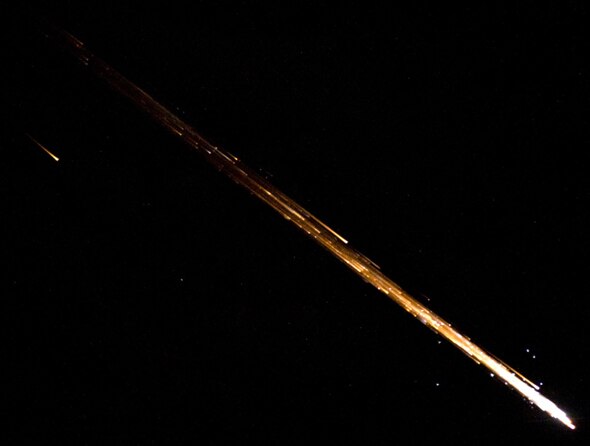Create a free profile to get unlimited access to exclusive videos, sweepstakes, and more!
Putting the WTF in WT1190F (Bonus: Taurid Meteors!)

A couple of weeks ago I wrote about an object discovered in October that’s on an intercept orbit with Earth. The object, which is pretty small, is due to hit us around 06:20 UTC on Friday. That time translates to 01:20 for the U.S. East Coast, or 10:20 p.m. Thursday night for the West Coast.
Not a whole lot has been learned about it since I first wrote the article. We know it’s on a weird orbit that carries it out past the Moon, but it’s definitely bound to Earth; it orbits us. That makes it very likely to be a piece of space junk, maybe a part of a rocket that sent a probe to the Moon. Which one? It’s not clear, though Bill Gray of Project Pluto makes a good case that it’s not from Apollo, and probably isn’t more than a few years old.
Whatever it is, it’s small, no more than a few meters across—we know that from measuring its brightness, and assuming it’s metal. If it’s darker, then it’s bigger, but it’s still pretty small. It’s expected to completely burn up off the southern coast of Sri Lanka, which would make a spectacular light show for any witnesses … except, unfortunately, that’s around noon local time so it may be hard or even impossible to see. If I lived in that area I’d certainly go look though! If you’re there: Face south, and look up.
Still, I wanted to point out a couple of things. One is that the name of the object is unusual; most asteroids are named differently. But this one was found in the Catalina Sky Survey, which has its own internal method of identifying nearby objects, which then get renamed later once they’re confirmed. I don’t think this one had enough time for that. The European Space Agency has a nice post on how it got its name.
The other thing I want to mention is that right now is the peak of the annual Taurid meteor shower, and by all accounts this year is a good one. In fact, lots of fireballs—exceptionally bright meteors—have been reported so far. The Taurids are known for their fireballs, but Mike Hankey at the American Meteor Society says this may be due to a quirk of orbital mechanics; the stream of cometary debris that makes up the shower can be influenced by the gravity of Jupiter, focusing it somewhat. Every 61 years, the prediction goes, there is a “swarm” of Taurids passing Earth, and this year happens to be the peak. The numbers reported so far are impressive and are certainly interesting as far as the prediction goes.
Observing the Taurids is pretty easy: Go outside after dark and look up. Be patient, you may not see anything for a while; it only produces about 10 or so meteors per hour. But given the number of fireballs predicted, it’s worth a shot.
The best time to go out is any time after early evening, maybe 8 p.m. or so local time. It doesn’t really matter which way you face, as long as you have a wide-open sky (with few things blocking it like trees, buildings, clouds, and so on). I prefer to lie down on a chaise lounge with a blanket, even though I generally bundle up. Colorado gets cold. I have a guide to watching meteors showers; it was written specifically for the Perseids in August, but most of the rules apply here too.
If you see any fireballs, report them to the AMS! It helps astronomers keep track of events, and in the end you’re making a small but interesting contribution to science. How cool is that?
Tip o’ the Whipple Shield to Amara Graps for the Taurids info.
Correction, Nov. 13, 2015: I originally incorrectly identified the debris as WT1109F.


























